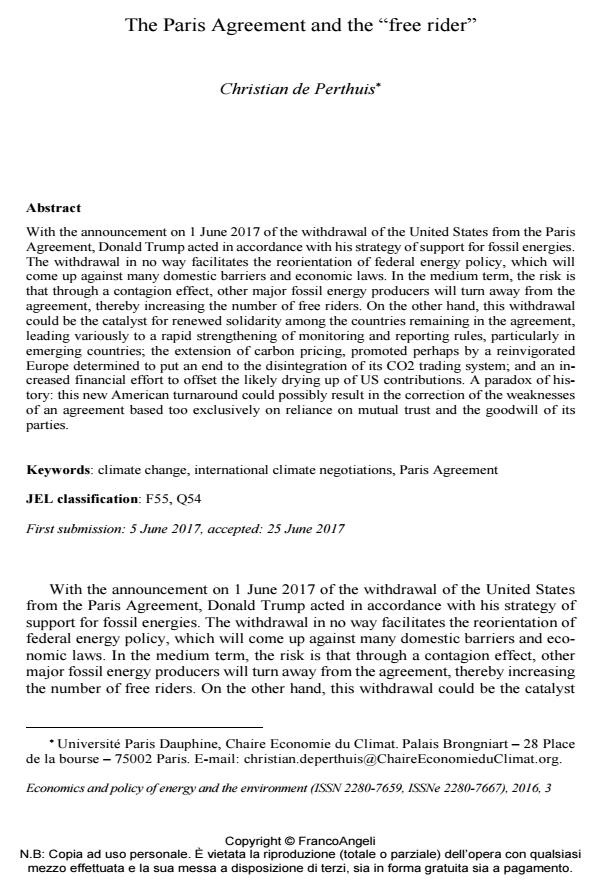The Paris Agreement and the "free rider"
Journal title ECONOMICS AND POLICY OF ENERGY AND THE ENVIRONMENT
Author/s Christian de Perthuis
Publishing Year 2017 Issue 2016/3
Language English Pages 14 P. 31-44 File size 174 KB
DOI 10.3280/EFE2016-003003
DOI is like a bar code for intellectual property: to have more infomation
click here
Below, you can see the article first page
If you want to buy this article in PDF format, you can do it, following the instructions to buy download credits

FrancoAngeli is member of Publishers International Linking Association, Inc (PILA), a not-for-profit association which run the CrossRef service enabling links to and from online scholarly content.
With the announcement on 1 June 2017 of the withdrawal of the United States from the Paris Agreement, Donald Trump acted in accordance with his strategy of support for fossil energies. The withdrawal in no way facilitates the reorientation of federal energy policy, which will come up against many domestic barriers and economic laws. In the medium term, the risk is that through a contagion effect, other major fossil energy producers will turn away from the agreement, thereby increasing the number of free riders. On the other hand, this withdrawal could be the catalyst for renewed solidarity among the countries remaining in the agreement, leading variously to a rapid strengthening of monitoring and reporting rules, particularly in emerging countries; the extension of carbon pricing, promoted perhaps by a reinvigorated Europe determined to put an end to the disintegration of its CO2 trading system; and an increased financial effort to offset the likely drying up of US contributions. A paradox of history: this new American turnaround could possibly result in the correction of the weaknesses of an agreement based too exclusively on reliance on mutual trust and the goodwill of its parties.
Keywords: Climate change, international climate negotiations, Paris Agreement
Jel codes: F55, Q54
Christian de Perthuis, The Paris Agreement and the "free rider" in "ECONOMICS AND POLICY OF ENERGY AND THE ENVIRONMENT" 3/2016, pp 31-44, DOI: 10.3280/EFE2016-003003